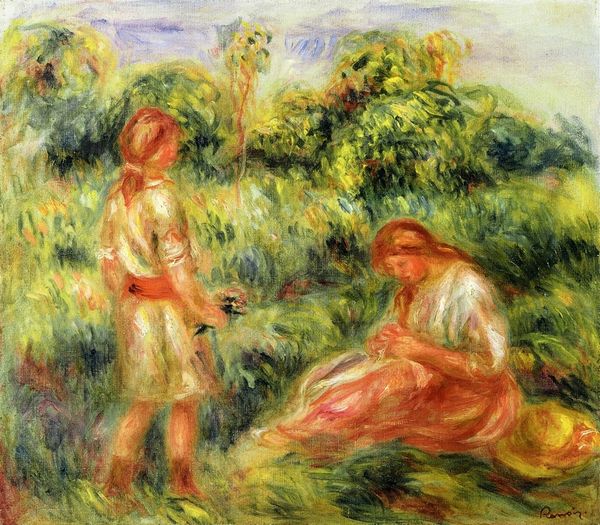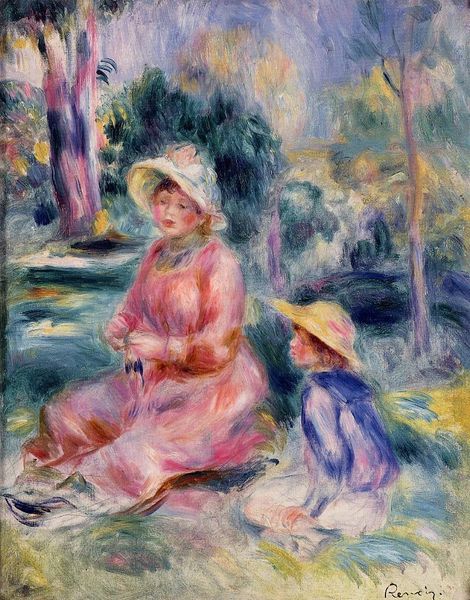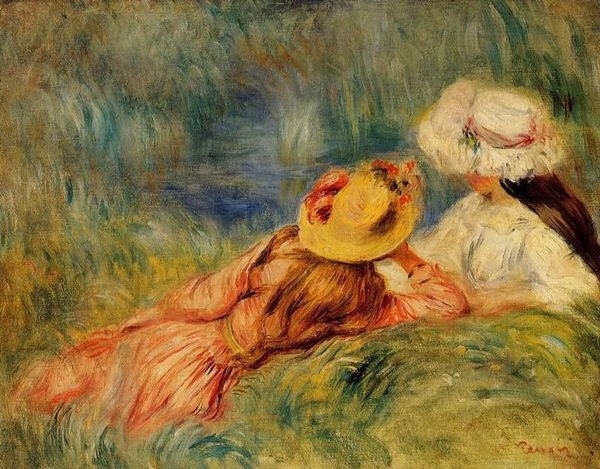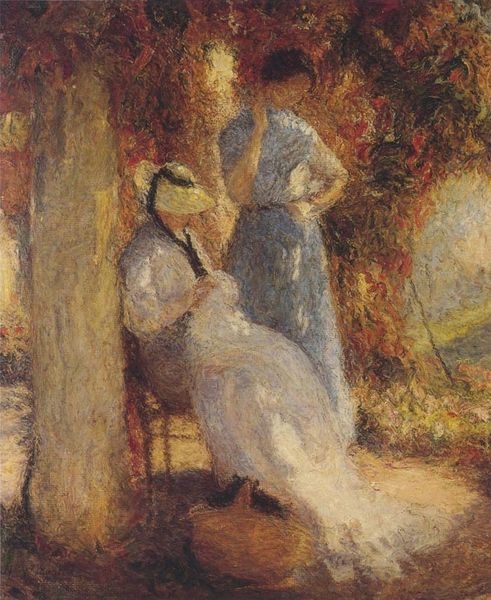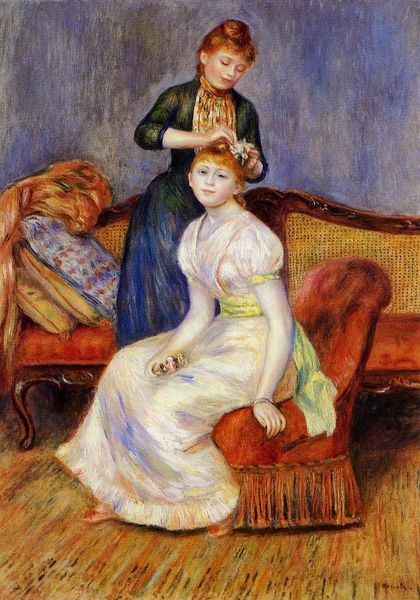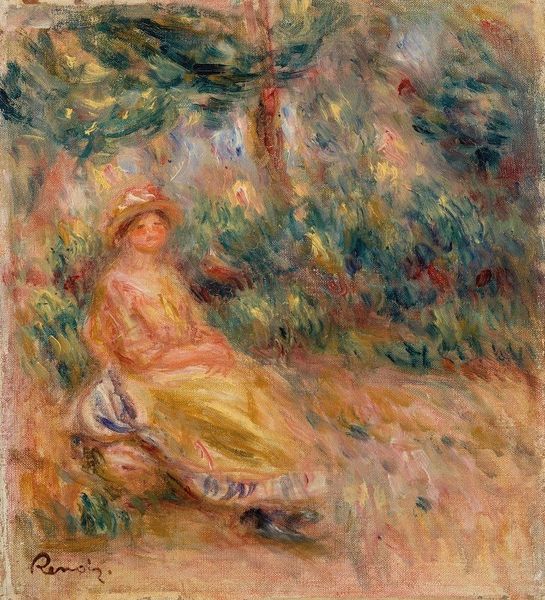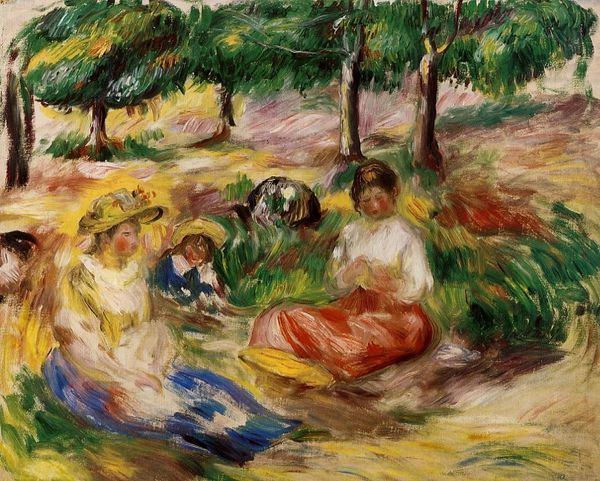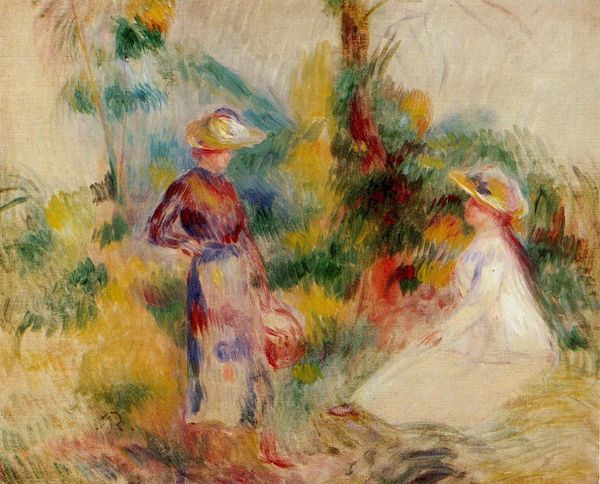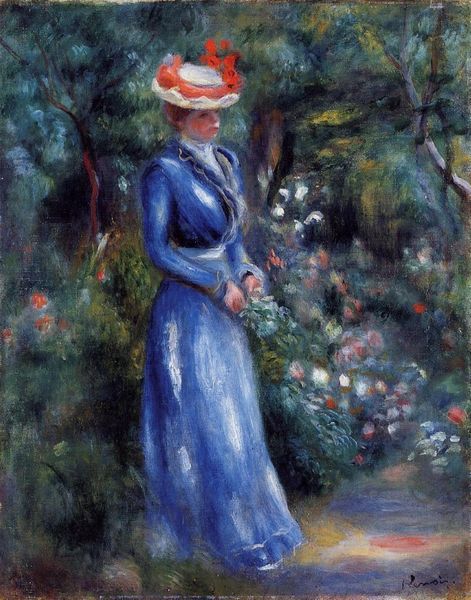
#
abstract painting
#
possibly oil pastel
#
oil painting
#
acrylic on canvas
#
underpainting
#
painting painterly
#
animal drawing portrait
#
facial portrait
#
watercolor
#
fine art portrait
Copyright: Public domain
Curator: Renoir’s “Yvonne and Jean,” painted in 1899, depicts a seated woman and child amidst a summery landscape. Editor: There's an incredible softness here. It's very soothing, almost like looking at a hazy memory of a perfect summer day. The brushwork feels light and airy. Curator: Absolutely. It’s useful to remember that this piece emerges during a pivotal point in Renoir’s career when he shifts focus to portraiture, often depicting domestic scenes of bourgeois comfort, aligning with the era’s patriarchal values. Editor: I’m immediately drawn to the hats - both figures are adorned with them. What might they signify, beyond mere sun protection? They frame the faces in very specific ways, almost creating halos, one much larger than the other… a demonstration of the status and social position. Curator: Good point. Think about how dress codes during this period enforced strict social hierarchies. Also consider the performative aspect of bourgeois femininity; beauty was currency and Renoir definitely contributed to that ideal, even if the technique feels groundbreaking. Editor: But within that structure there’s a quiet rebellion! Look at the color palette – soft blues and creams. The lack of sharp definition blurs the lines. The landscape envelops the subjects as a nurturing and embracing scene. There are yellow blooms at the bottom. I’d almost say it depicts comfort rather than high class. Curator: I understand that. And yet, who has access to those "embracing scenes?" Even this "softness" reproduces an ideal, and who is it available to? Renoir doesn’t confront the viewer; he provides visual confirmation of bourgeois superiority and ideal mothering. Editor: It’s interesting to observe these images which can act like keys, opening doors to lost worlds of feelings, experiences, or social order of the olden days… Curator: Precisely. Engaging with these visual keys critically allows us to question the structures of those worlds and potentially reconfigure them in our own.
Comments
No comments
Be the first to comment and join the conversation on the ultimate creative platform.
